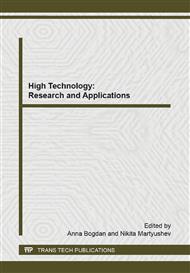p.837
p.845
p.850
p.854
p.858
p.864
p.870
p.876
p.881
Efficiency of Balancing by Liquid-Type Automatic Balancing Devices
Abstract:
The article focuses on modelling the behaviour of a liquid-type automatic balancing device. To perform mathematical research the rotor model is used that contains a ring functioning as a vessel coupled to the rigid shaft being rotatable on bearings. Data on the influence of various factors on balancing accuracy are presented. The obtained modeling results indicate that the vibration amplitude at supercritical frequencies will decrease proportionally to the increase in the parameters of a liquid autobalancer. The performed calculation also reveals that the more the parameters of a liquid autobalancing device, the higher the efficiency of balancing. Provided the condition of the liquid sufficiency in the ring is satisfied, the independence of the rotor vibration amplitude from the mass of the liquid in the vessel is achieved. Critical rotor speed does not depend on the volume of the liquid in the ring if the condition of its sufficiency is met.
Info:
Periodical:
Pages:
858-863
Citation:
Online since:
September 2014
Authors:
Price:
Сopyright:
© 2014 Trans Tech Publications Ltd. All Rights Reserved
Share:
Citation:


